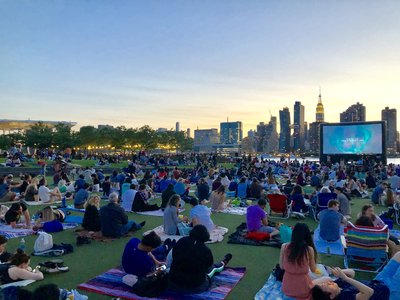Art that’s lit! The bygone era of matchbooks
Largely gone are the days when matchbooks were readily available near a cash register. If you have an old matchbook sitting around and collecting dust, chances are that it offers value in the name of history, advertising, and art.
Collecting matchbooks, matchboxes, and matchbox labels is part of a unique hobby known as phillumeny. If the matches are intact, desirability increases.
In 1892, a Philadelphia lawyer named Joshua Pusey, also known as “Ol’ Josh,” invented the matchbook.
In 1894, Diamond Match Company purchased the rights and became the largest manufacturer in the industry. The company’s first factory in Barberton, Ohio, produced an estimated 150,000 matchbook covers daily.
Matchbooks would advertise a wide range of subjects. The golden age of matchbooks spans the 1940s and 1950s, with a range of sizes, colors, unique artwork, and slogans.
In the mid-1980s, the matchbook market folded as a result of anti-smoking campaigns, the efficiency of lighters, and steep labor costs.
Local matchbooks that have survived are countless, and are associated with shops, restaurants, and recreation and entertainment venues. A majority of businesses are no longer in existence, but matchbooks play a role in establishing a timeline of how properties evolved.
Iconic sites that were often portrayed include the Forest Hills Inn, which opened in 1912 and was the center of a classy social life in Station Square. A rare super-sized matchbook with a green, black, and white color scheme features a rendering of the inn on the cover.
Inside are large matches. As long as they remain unseparated, a more detailed work of art depicting the inn is evident.
A yellow-and-red matchbook from 1967 advertised the annual Forest Hills Music Festival and proclaimed Diet-Rite Cola as “America’s No. 1.”
Long before the days of the web, the season’s program was advertised on the inside of a matchbook, including the Lovin’ Spoonful & Judy Collins, The Monkees, Simon & Garfunkel, Trini Lopez, and the musical couple Steve Lawrence and Eydie Gorme.
Entertainment venues that are long-forgotten but live on via matchbook covers include Carlton Terrace and The Stratton nightspots on opposite corners of 71st Road on Queens Boulevard, as well as Boulevard Tavern at 94-05 Queens Boulevard, a dining and wedding venue in Rego Park that attracted Big Bands and solo singer Patti Page.
Rather than illustrations, this matchbook featured color photos depicting an illuminated neon billboard that read “2 Shows Nightly, Luncheon – Dinner.”
London Lennie’s in Rego Park is depicted in a few matchbook cover designs, but much missed by natives is Scott’s at 96-24 Queens Boulevard, which dates back to 1941. Regulars included celebrities Sylvia Sidney, Cornel Wilde, and Thelma Ritter.
The red-and-white cover references “Long Island’s outstanding sea food restaurant.” It features a rod and fish over a map wrapping around the slogan “The fish you eat today slept last night in Chesapeake Bay.”
Sports were spotlighted on matchbooks, including Hollywood Lanes, a 30-lane bowling alley that opened in 1952 in the Metropolitan Bank Building at 99-25 Queens Boulevard.
The blue-and-silver matchbook of Kabak’s Dairy at 102-21 Metropolitan Avenue features a farm illustration with “Butter, Eggs, Cheese,” and advertises self-service, frozen foods, and free delivery along with a vintage phone number, BO 8-3556.
Luncheonettes more than just lunch. A matchbook for Chippy’s Luncheonette at 104-21 Queens Boulevard advertised “Good food, fountain and table service, stationery, papers and magazines.”
An Art Deco-style red-and-black matchbook for Martin Stockman at 71-47 Austin Street advertises a liquor and wine merchant and reads “A name that merits confidence.”
Delicatessens are now few and far between, but on matchbooks they are alive and well. Lloyd’s Delicatessen at 102-35 Queens Boulevard advertises a full seven-course dinner with a choice of 15 main dishes, including a smorgasbord and free parking in the rear.
A wood-themed matchbook captured the essence of Henry’s at 102-29 Queens Boulevard, a popular destination as Queens’ only dairy restaurant and bakery.
A succession of Asian restaurants is evident at 64-43 108th Street. What has been known as Cho-Sen Garden for decades, was once On Luck Restaurant. Its matchbook cover boasts “Chinese and American cooking,” a cocktail lounge, and catering for all occasions.




